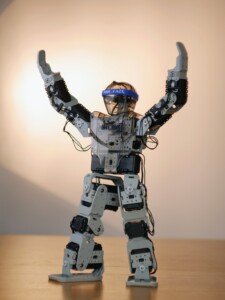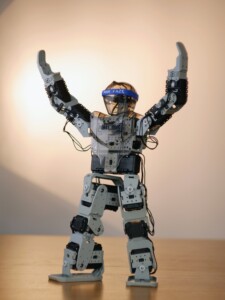What to do with Breaths
Ah, the age-old question—at least as old as voice-over—of what to do with breaths in your recording. In the new era of human and AI voices, our breath is one of the main things that sets us apart from the robots. We are real—hear us breathe!
But alas, not all producers and clients agree. When it comes to breaths in a recording, it’s never a cut and dry, one-answer-fits-all solution. Your approach should vary based on the project, client, producer, and a myriad of

other factors. But there are some things to consider in all instances.
Breathe Properly
First, it’s imperative that you’re breathing properly behind the microphone. This ensures that far fewer breaths are audible in the final recording. Standing or sitting with impeccable posture gives your body space to breathe naturally, also known as diaphragmatic breathing.
If you’re not sure what diaphragmatic breathing is or how to train yourself to perform this way behind the microphone, then it’s probably time to do some research. A wonderful resource from my grad school years is the work of Kristin Linklater and her book Freeing the Natural Voice.
In short, we shouldn’t be gasping for air behind the microphone. It’s not a desperate scramble for oxygen. Our bodies are able to breathe naturally, in a supported way, that honestly doesn’t sound loud or obnoxious when editing in post-production.
Of course, there are many opportunities to make breathing part of your performance for character reads in commercial, audiobook, and animation projects. It’s all about finding the balance between what sounds believable and relatable and what breaths are distracting.
When to Edit
But of course, an audible breath or two (or thirty or forty…) is bound to sneak through. You’re only human after all. And that’s the important point. You’re human. You breathe. Most producers, editors, and clients understand this and aren’t looking for audio that’s completely devoid of breath.
In longer recordings, it’s not necessary to edit out all breaths, or even some of them. Taking out individual breaths in a 10-hour audiobook is a massive and time-wasting undertaking. For your own sanity, do not attempt this. You may want to clean up these breaths with a DAW plug-in which we’ll discuss shortly.
For shorter recordings, it may be appropriate to edit out breaths simply due to length. In a 30-second commercial, you need all the time you can get. Editing out your breathing in recordings under 2 minutes is pretty customary.
Of course, with either of the above, you can get a little technical help to support you so it’s not too time-consuming.
Beware of “De-Breathers”
A de-breather is an audio plug-in you can add to your DAW (digital audio workspace) that “identifies breaths, splits them to a separate track from the vocal content, and lets you mix in exactly the amount of breath level you want. Plus, you can process the breaths independently, for maximum control” (Sweetwater).
However, not all de-breather plug-ins are created equal. And even the best ones require a talented audio engineer to ensure that the final recording doesn’t sound staccato or have strange pauses where breaths should be.
Before using this technology do some research on which plug-ins work best with your DAW and read customer reviews. Once selected, play around with the de-breather on your own to set the right levels for premium audio quality. You don’t want to install a new plug-in and use it for the first time on a big project that’s due tomorrow. Adding new elements to your workflow should be done intentionally. Don’t rush it.
The Client Knows Best…Sometimes
In the end, of course, whatever the client says goes. But since we know that often clients don’t know what they need, it’s a good idea to have a plan in place to tackle breaths before they become a problem. You may offer to record several options (for a short script) so clients can hear the difference between eliminating breaths altogether and leaving a few in. But make sure you calculate your time when including variable deliverables to make sure that providing several takes is worth your valuable time. In the end, keep in mind that different clients have different perspectives. One bit of negative or critical feedback about the inclusion of breaths doesn’t necessarily mean that all future prospective clients will carry the same opinion.
Because ultimately, breaths are one of the many things that separate human voices from AI. We also add vocal personality, variety, and creativity!
Caroline Turner Cole is a voice-over artist and coach based in Dallas, TX. Reach out and connect via Instagram @carolinecolestories or Twitter @ccolestories.
Check out our free PDF with pro-tips from real working voice-over actors here!
Want to learn more about voiceover? Signup for our introductory VO webinar.




